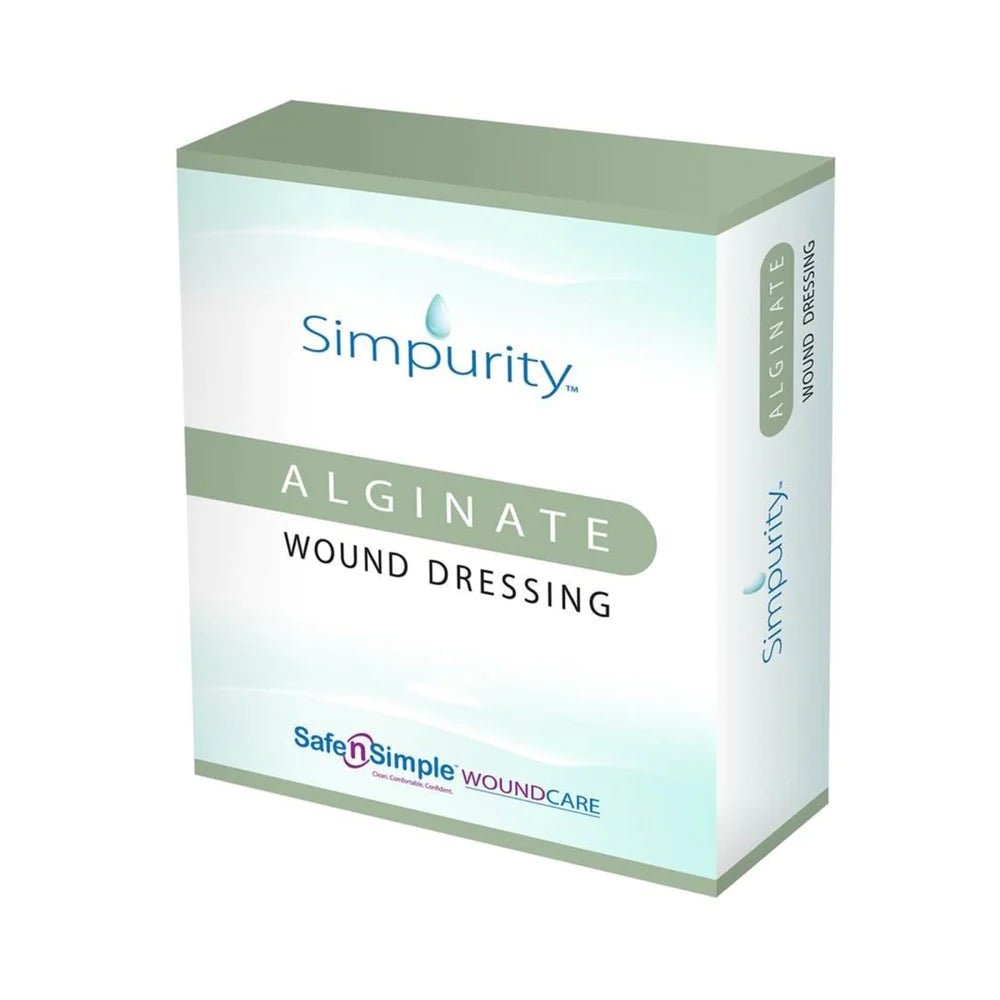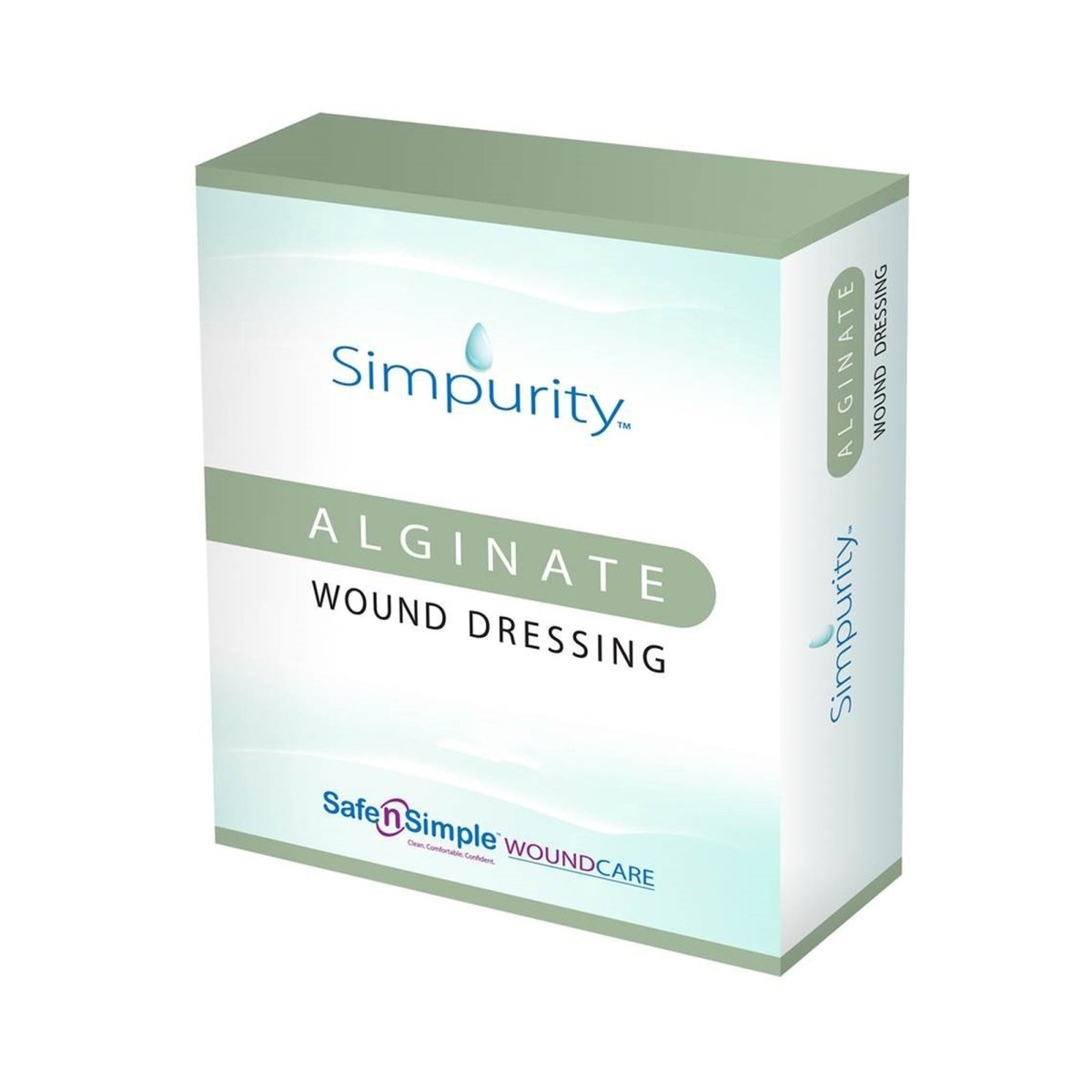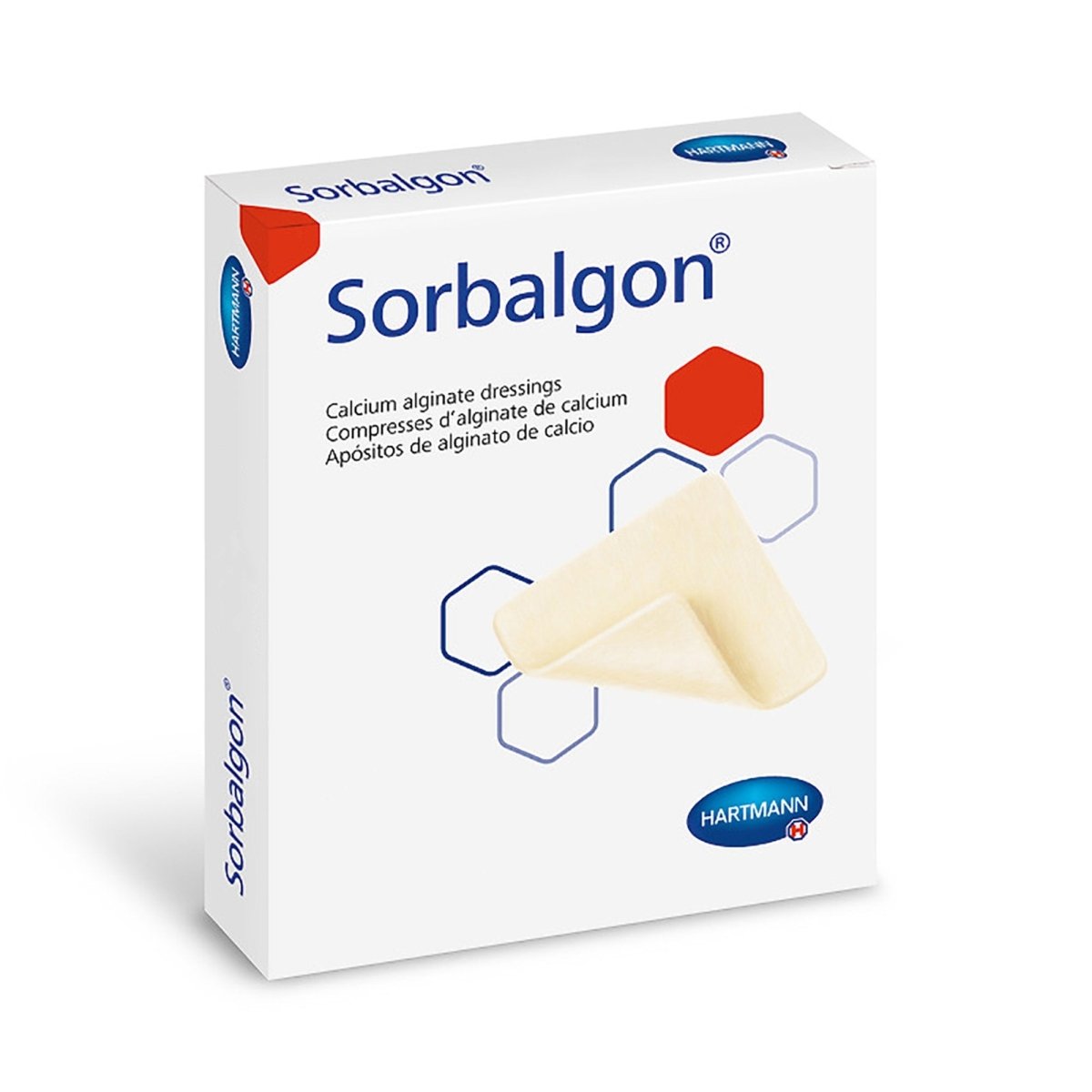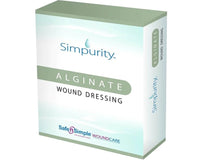Table of Contents
Alginate dressings are wound dressings derived from seaweed, specifically sodium alginate, a natural polysaccharide. These dressings come in various forms, including hydrogels, films, foams, nanofibers, and topical formulations. Alginate dressings have unique properties such as high water uptake, sustained drug release, and non-immunogenic effects, making them an excellent choice for wound healing.
One of the key benefits of alginate dressings is their ability to create a moist environment that promotes wound healing. They can absorb wound exudates and transform into a gel, providing a protective barrier against bacterial infections. Additionally, alginate dressings can act as drug delivery systems by loading bioactive agents that enhance the wound healing process.
These biodegradable dressings have been commercially available since 1983 and are commonly used on wounds with heavy exudate. They can absorb up to 15-20 times their weight in exudate and come in various forms such as flat sheets, ropes, and ribbons. However, they're not suitable for heavily bleeding wounds, dry wounds, or wounds with minimal exudate. Alginate dressings are a natural and effective choice for wounds requiring absorbent dressings and can be left unchanged for 5-7 days unless the exudate capacity is reached.
Overview of Alginate Dressings
Introduction
In the world of wound care, alginate dressings have gained significant attention for their unique properties and healing benefits. These dressings are made from sodium alginate, a natural polysaccharide derived from seaweed. Since their commercial availability in 1983, alginate dressings have been widely used to treat wounds with heavy exudate, such as burns, surgical wounds, and chronic ulcers.
Properties
Alginate dressings possess a range of properties that make them highly effective in wound healing. One of their key characteristics is their ability to absorb high amounts of wound exudate. In fact, alginate dressings can absorb 15-20 times their own weight in exudate, creating a moist environment that is crucial for optimal wound healing. This moisture helps promote re-epithelialization and granulation tissue formation, while also protecting the wound from bacterial infections.
These dressings also have the unique ability to transform into a gel when in contact with wound exudates. This gel formation helps to maintain a moist environment, limit wound secretions, and minimize bacterial contamination. The nature of the gel formed depends on the composition of the alginate, specifically the M, G, and MG groups. Alginate dressings rich in mannuronate form soft gels, while those rich in guluronic acid form firmer gels with higher absorbency.
Furthermore, alginate dressings can act as drug delivery systems. The dressings can be loaded with bioactive agents, such as silver sulfadiazine, streptomycin, and diclofenac, which enhance the wound healing process. The sustained release of these drugs from the dressings promotes therapeutic effects and reduces the need for frequent dressing changes.
Forms
Alginate dressings are available in various forms to suit different wound types and preferences. These include hydrogels, films, foams, nanofibers, and topical formulations. Hydrogels provide a cooling and soothing effect, while films offer a thin and transparent option. Foams provide additional cushioning and protection, and nanofibers offer a highly porous structure for enhanced absorption. Topical formulations, on the other hand, allow for targeted application of the alginate dressing.
The versatility of alginate dressings is further enhanced by the different ratios of sodium alginate and other materials used in their preparation. Alginate dressings can be prepared with gelatin, xanthan gum, and methylcellulose to modify their properties and optimize their performance.
Research Citation
For further reading on the topic, you can refer to the research article available at this citation.
The Benefits and Applications of Alginate Dressings
Alginate dressings are wound dressings made from sodium alginate, a natural polysaccharide derived from seaweed. These dressings have gained popularity in the medical field due to their unique properties and numerous benefits in wound healing. In this section, we'll explore the benefits and applications of alginate dressings, including their role in wound healing, ability to create a moist environment, and potential for drug delivery.
Wound Healing
One of the key advantages of alginate dressings is their ability to promote wound healing. When applied to a wound, alginate dressings absorb wound exudates and transform into a gel, creating a moist environment that is conducive to the healing process. This moist environment helps to facilitate the migration of cells involved in wound healing, such as fibroblasts and macrophages, leading to faster and more efficient healing.
Moist Environment
The creation of a moist environment is crucial for optimal wound healing, and alginate dressings excel in this aspect. These dressings have high water uptake and increased porosity, allowing them to absorb and retain a significant amount of wound exudates. This moisture helps to prevent the wound from drying out, which can impede the healing process. Additionally, the moist environment created by alginate dressings helps to soften and remove necrotic tissue, promoting the formation of healthy granulation tissue.
Drug Delivery
In addition to their role in wound healing, alginate dressings can also act as effective drug delivery systems. These dressings have the ability to load bioactive agents, such as antimicrobial agents or growth factors, which can enhance the wound healing process. The sustained release of these agents from the alginate dressings ensures a continuous and localized delivery, maximizing their therapeutic effects.
Alginate dressings can be prepared with different ratios of sodium alginate and other materials, such as gelatin, xanthan gum, and methylcellulose, to further enhance their drug delivery capabilities. Various drugs, including silver sulfadiazine, streptomycin, and diclofenac, can be loaded into alginate dressings to provide targeted treatment for specific wound types or infections.
In conclusion, alginate dressings offer a range of benefits and applications in wound care. Their ability to create a moist environment, absorb wound exudates, and act as drug delivery systems make them versatile and effective in promoting wound healing. However, it's important to note that alginate dressings are not suitable for heavily bleeding wounds, dry wounds, wounds with minimal exudate, surgical implantations, third-degree burns, or individuals with allergies to the components of the dressing.
To learn more about alginate dressings, you can refer to our research citation here.
Preparation and Composition of Alginate Dressings
Alginate dressings are wound dressings made from sodium alginate, a natural polysaccharide derived from seaweed. They're available in various forms such as hydrogels, films, foams, nanofibers, and topical formulations. These dressings have gained popularity due to their unique properties and their ability to create an optimal environment for wound healing.
Sodium Alginate Ratios
Alginate dressings can be prepared with different ratios of sodium alginate and other materials such as gelatin, xanthan gum, and methylcellulose. The choice of ratio depends on the desired properties of the dressing, such as its absorbency, gel strength, and flexibility. Different ratios can result in variations in the porosity and degradation rate of the dressings.
Other Materials
In addition to sodium alginate, alginate dressings may also contain other materials to enhance their performance. These materials can include antimicrobial agents, such as silver sulfadiazine or streptomycin, which help prevent bacterial infections in the wound. Other additives, such as gelatin or methylcellulose, may be used to modify the physical properties of the dressings.
Drug Loading
One of the unique features of alginate dressings is their ability to act as drug delivery systems. Bioactive agents can be loaded into the dressings to enhance the wound healing process. Drugs such as silver sulfadiazine, streptomycin, and diclofenac have been successfully incorporated into alginate dressings. The dressings can release these drugs in a sustained manner, providing localized therapy to the wound site.
Alginate dressings are biodegradable dressings made from seaweed and have been commercially available since 1983. These wound dressings have been extensively studied and have been shown to enhance wound healing, promote re-epithelialization and granulation tissue formation, and protect wounds from bacterial infections. These dressings are often used on wounds with heavy exudate, as they have the ability to absorb 15-20 times their own weight in exudate.
The nature of the gel formed by the dressing depends on the M, G, and MG groups in the alginate. Alginate dressings with a higher content of mannuronate form soft gels, while those with a higher content of guluronic acid form firmer gels with higher absorbency. The gel formed by the dressing is highly hydrophilic, limiting wound secretions and minimizing bacterial contamination.
Alginate dressings are a good choice for wounds requiring an absorbent dressing. They not only protect the wound from bacterial infections, but maintain a moist environment for healing, and are easy to apply. These dressings can be left unchanged for 5-7 days, unless the exudate capacity is reached. However, they're not suitable for heavily bleeding wounds, dry wounds, wounds with minimal exudate, surgical implantations, third-degree burns, or individuals with allergies to the components of the dressing.
To ensure sterility, gamma irradiation is a suitable method of sterilization for alginate-based dressings. This method effectively kills microorganisms while maintaining the integrity and properties of the dressings.
In conclusion, alginate dressings are versatile wound dressings that offer unique properties and benefits for wound healing. They are derived from natural sources, easy to use, and have been proven effective in promoting wound healing and preventing infections. Alginate dressings are a valuable option for healthcare professionals in managing wounds with heavy exudate and can be tailored to meet specific patient needs.
To learn more about alginate dressings, you can refer to this source.
Characteristics of Alginate-based Wafers
Alginate dressings are wound dressings made from sodium alginate, a natural polysaccharide derived from seaweed. These dressings have gained popularity due to their unique characteristics and benefits in wound healing. In this section, we'll explore the key characteristics of alginate-based wafers.
Flexibility
One of the notable features of alginate-based wafers is their flexibility. Unlike traditional dressings that can be rigid and uncomfortable, alginate wafers are soft, pliable, and non-brittle. This flexibility allows for better conformability to the wound site, ensuring proper coverage and contact with the wound bed. As a result, the dressing can effectively absorb exudate and create an optimal healing environment.
Porosity
Another important characteristic of alginate-based wafers is their increased porosity. The wafers can be engineered to have enhanced porosity through a process called annealing. This increases the surface area available for absorption, allowing the dressing to effectively manage wound exudate. The increased porosity also facilitates the exchange of gases and nutrients, promoting a favorable environment for wound healing.
Sterilization
Ensuring the sterility of wound dressings is crucial to prevent infections and promote healing. Alginate-based wafers can be effectively sterilized using gamma irradiation. This method of sterilization is compatible with the properties of the dressings and does not compromise their integrity or functionality. This provides a reliable and efficient means of sterilizing alginate-based wafers, making them safe for use in clinical settings.
In conclusion, alginate-based wafers possess unique characteristics that make them suitable for wound healing applications. Their flexibility allows for comfortable and conformable dressing application, while their increased porosity enhances absorption and promotes an optimal healing environment. Additionally, the ability to sterilize these wafers using gamma ensures their safety and efficacy. Overall, alginate-based wafers offer a promising solution for effective wound management and improved patient outcomes.
For further information, refer to the research article here.
Effectiveness of Alginate Dressings in Wound Healing
What are Alginate Dressings?
Alginate dressings are wound dressings made from sodium alginate, a natural polysaccharide derived from seaweed. They come in various forms such as hydrogels, films, foams, nanofibers, and topical formulations. Alginate dressings have several properties that make them effective in wound healing, including high water uptake, increased porosity, sustained drug release, and non-immunogenic effects. These dressings create a moist environment that is beneficial for wound healing and can absorb wound exudates, transforming into a gel. They can also act as drug delivery systems by loading bioactive agents that enhance the wound healing process. Alginate dressings can be prepared with different ratios of sodium alginate and other materials such as gelatin, xanthan gum, and methylcellulose, and can be loaded with drugs such as silver sulfadiazine, streptomycin, and diclofenac.
Enhanced Healing
Alginate dressings have been shown to enhance wound healing by promoting re-epithelialization and granulation tissue formation. When applied to a wound, the dressings create an optimal environment for the growth of new tissue. The moist environment and absorption of exudates help to maintain a balance between hydration and moisture, which is essential for the wound healing process. The dressings also provide a physical barrier that protects the wound from external factors and minimizes the risk of infection.
Granulation Tissue
Granulation tissue is an essential component of wound healing, as it provides a scaffold for the growth of new blood vessels and fibroblasts. Alginate dressings promote the formation of granulation tissue by creating a moist environment that favors cell migration and proliferation. The dressings also help to remove excess exudates and debris from the wound, allowing the granulation tissue to develop without interference.
Bacterial Protection
Alginate dressings have antimicrobial properties that help protect wounds from bacterial infections. The gel formed by the dressings acts as a physical barrier, preventing bacteria from entering the wound. Additionally, some alginate dressings contain bioactive agents such as silver sulfadiazine, which have antimicrobial properties and further enhance the dressings' ability to protect against infection. The dressings also limit wound secretions and minimize bacterial contamination due to their highly hydrophilic gel formation.
In conclusion, alginate dressings are effective in wound healing due to their ability to enhance healing, promote granulation tissue formation, and protect wounds from bacterial infections. These biodegradable dressings made from seaweed have been commercially available for several decades and are commonly used on wounds with heavy exudate. Alginate dressings offer a versatile and effective solution for wounds requiring absorbent dressings, such as burns, surgical wounds, and chronic ulcers. However, they are not suitable for heavily bleeding wounds, dry wounds, wounds with minimal exudate, surgical implantations, third-degree burns, or individuals with allergies to the components of the dressing.
Usage Guidelines for Alginate Dressings
Alginate dressings are versatile wound dressings made from sodium alginate, a natural polysaccharide derived from seaweed1. They offer numerous benefits for wound healing and are available in various forms such as hydrogels, films, foams, nanofibers, and topical formulations1. In this section, we'll cover the usage guidelines for alginate dressings, including considerations for exudate levels, suitable wounds, and allergy concerns.
Exudate Levels
Alginate dressings are particularly suitable for wounds with heavy exudate12. These dressings have a high water uptake capacity and can absorb 15-20 times their weight in exudate1. When in contact with wound exudates, alginate dressings transform into a gel, creating a moist environment that is beneficial for wound healing1. However, it's important to note that alginate dressings are not suitable for wounds with minimal exudate or heavily bleeding wounds1.
Suitable Wounds
Alginate dressings can be used on various types of wounds, including burns, surgical wounds, and chronic ulcers12. They protect the wound from bacterial infections and maintain a moist environment for optimal healing1. Alginate dressings are particularly effective for moderate to heavily exuding wounds2. However, they should not be used on dry wounds or wounds covered with hard necrotic tissue2.
Allergy Considerations
Before using alginate dressings, it's important to consider any potential allergies to the components of the dressing. Alginate dressings are generally well-tolerated, but individuals with known allergies to seaweed or any other components of the dressing should avoid using them2. If you are unsure about potential allergies, it's always best to consult with a healthcare professional.
In conclusion, alginate dressings are valuable wound dressings with unique properties that promote wound healing. They are best suited for wounds with heavy exudate and should be avoided for wounds with minimal exudate or heavy bleeding. It's important to consider any allergies to the components of the dressing before use. By following these guidelines, you can effectively utilize alginate dressings to promote optimal wound healing.
For more information, you can refer to the research article on What are alginate dressings?
Conclusion
In conclusion, alginate dressings are wound dressings made from sodium alginate, a natural polysaccharide derived from seaweed. These dressings are available in various forms such as hydrogels, films, foams, nanofibers, and topical formulations. Alginate dressings have several beneficial properties, including high water uptake, increased porosity, sustained drug release, and non-immunogenic effects. They create a moist environment that is ideal for wound healing.
One of the key features of alginate dressings is their ability to absorb wound exudates and transform into a gel. This gel not only helps to maintain a moist environment, but it also provides a protective barrier against bacterial infections. Alginate dressings can also act as drug delivery systems by loading bioactive agents that enhance the wound healing process.
These dressings can be prepared with different ratios of sodium alginate and other materials such as gelatin, xanthan gum, and methylcellulose. They can also be loaded with drugs such as silver sulfadiazine, streptomycin, and diclofenac. Alginate-based wafers, which are flexible, soft, and non-brittle, can be annealed to enhance their porosity. Gamma irradiation is a suitable method of sterilization for alginate-based dressings.
Research has shown that alginate dressings can significantly enhance wound healing, promote re-epithelialization and granulation tissue formation, and protect wounds from bacterial infections. These dressings have been commercially available since 1983 and are often used on wounds with heavy exudate. Alginate dressings can absorb 15-20 times their own weight in exudate and come in various forms such as flat sheets, ropes, and ribbons.
It's important to note that alginate wound dressings are not suitable for heavily bleeding wounds, dry wounds, wounds with minimal exudate, surgical implantations, third-degree burns, or individuals with allergies to the components of the dressing. However, for wounds requiring absorbent dressing, alginate dressings are a good choice.
In summary, alginate dressings are natural wound dressings derived from seaweed. They've got gelling properties that allow them to absorb wound exudates and create a moist environment for healing. Alginate wound dressings are not only versatile but can be used on various types of wounds, including burns, surgical wounds, and chronic ulcers. They're biodegradable and have been shown to promote wound healing. Alginate dressings are a valuable tool in wound care and offer numerous benefits for patients.











